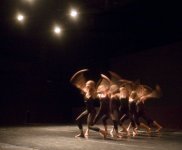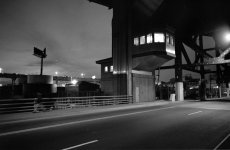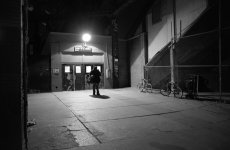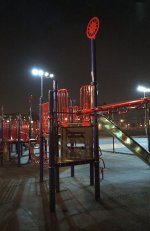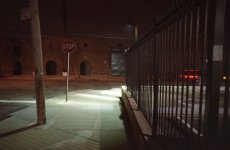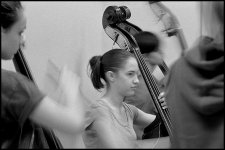Ara Ghajanian said:
I shoot a lot of available light and stage lit scenes. I have a Summicron 50mm f2 and I've often wondered how great the advantage of one extra stop to f1.4 would be. I started another thread a few weeks about how low of a shutter speed you could hand hold an M. Is that one stop really that valuable to you? I'm really not concerned with quality of glass or any other feature of either lens, I just want to know if that one stop justifies the cost of a Noctilux?
Ara
I do a lot of stage-lit photography, too, and in my opinion the difference between f/2 and f/1.4 is definitely worth it. (Whether you can
afford it is a different question!... that's between you and your banker, spouse, etc.)
You can see why if you think in terms of shutter speeds instead of lens apertures. Let's assume you're photographing a dimly-lit show and you're already using the highest ISO rating that you can tolerate in terms of image quality. Because it's a stage performance, you can't add light (other than by bribing the light-board operator to bump it up a little) and you certainly don't want to spoil the lighting effects (and get yourself kicked out of the theater) by using flash.
In these circumstances, a lens with a wider maximum aperture is really the only way to "buy" higher, safer shutter speeds. If the lighting forces you to use your f/2 lens at 1/15 sec. (pretty risky) then an f/1.4 lens would let you use 1/30 (safer); if the f/2 let you use 1/30, then the f/1.4 would let you use 1/60 (much safer.)
Remember that it's not
solely a matter of how slow a shutter speed you can hand-hold. Even if you're rock-steady or are using a tripod, you still also have to consider the motion of the
subject.
The more limited you are in your choices of shutter speed, the more limited you are in choosing scenes you can photograph successfully. If you have to wait for situations where everything is holding still enough to use 1/15, you'll have a very limited selection of photo opportunities in most shows. If you can use 1/30, that opens up more possibilities, and if you can use 1/60, you have an even wider selection of what you can shoot. (I shoot a lot of dance performances, in whicih 1/250 is pretty much the "floor" in terms of dealing with action; even having to drop back to 1/125 cuts me out of a lot of potentially photogenic moments.)
The suggestion to use a wider lens was an interesting one, and might work in a lot of documentary-style shooting. But I suspect it will be of limited use in stage-lit situations, in which usually you want the people in the shot to occupy most of the picture area. If you used a wider lens, you'd have to magnify the image more so you could crop it down to just the "live" area; the extra magnification would negate the effect of using the wider lens, so you'd be no better off.
Okay, sometimes you can use a wide-angle lens AND a slow shutter speed, if you're aiming for a result like the attachment --but I like to have options
besides that kind of rendition, and usually a wider-aperture lens is the only way to get them!


